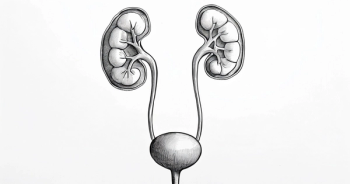
- Bladder Cancer
- Volume 1
- Issue 1
Other Factors Affecting Prognosis and Treatment in Bladder Cancer
While the stage of bladder cancer is influential in determining treatment strategy, a number of other factors may also affect a patient’s treatment regimen.
This article is part III of a series. View parts I,II:Evolving Paradigms in Bladder Cancer> >
While the stage of bladder cancer is influential in determining treatment strategy, a number of other factors may also affect a patient’s treatment regimen. These include the type of bladder cancer, location of the tumor, the number of tumors, tumor size, tumor grade, age and health, recurrence status, and tumor biomarkers.
The cell type that a bladder cancer arises from may be used to determine treatment strategies based upon methods used to successfully treat other cancer types with the same parent cell. For example, squamous cell carcinomas in the bladder may be treated with fluorouracil (5-FU), taxanes, and/or methotrexate, because these agents are effective in other squamous cell carcinomas. Squamous cell carcinoma may also be treated with cystectomy and/or radiation therapy. Adenocarcinomas may be treated with partial or radical cystectomy, and chemotherapy treatment regimens must be personalized for these tumors because conventional chemotherapy for bladder cancer is ineffective against this tumor type. Small cell bladder tumors are treated with neoadjuvant therapies used for other small cell cancers with or without cystectomy and/or radiation therapy. Finally, sarcomas of the bladder are treated as other sarcomas. Tumors with mixed histology are treated as pure urothelial carcinoma of the bladder, taking into account their worse prognosis.13
Tumor location, number, size, and grade are all important determinants of bladder cancer treatment. These factors help determine which cancers are at low, medium, and high risk for recurrence. Grade is a measure of how abnormal the cancer cells appear histologically compared with normal bladder cells. Higher grades correlate with higher risk for recurrence, lending these tumors to more aggressive therapies to prolong or prevent recurrence. Larger tumors and higher numbers of tumors also indicate higher risk for recurrence. Finally, tumor presence in the bladder alone or also in neighboring organs or distant metastases affects a patient’s treatment regimen. For example, localized bladder tumors may be treated with TURBT plus intravesical therapy, while metastatic disease is treated with systemic chemotherapy.34
Age, general health, and disease history will also factor into a patient’s treatment regimen. Older age or coexisting medical conditions may result in higher probability of complications from bladder cancer treatments, which should be taken into consideration when selecting a treatment regimen. Additionally, if a patient has recurrent disease, repeating first-line chemotherapeutic or intravesical treatment strategies are not likely to be beneficial. The physician may therefore recommend a different approach that is congruent with a patient’s specific tumor.
Biomarker discovery in bladder cancer is a young field but one that has exciting implications for detecting bladder cancer and measuring patient response to treatment. While several potential molecular markers for prediction of clinical response and outcome have been identified recently, there is still not a single marker or group of markers that is reliable enough to replace standard clinical parameters used to determine treatment course. However, most of the potential molecular markers identified have not been tested in enough patients of varying grade and stage to demonstrate their prognostic value.84Hopefully, with future multiinstitutional studies, some of these markers will be validated as independent, prognostic markers in bladder cancer. Several of these promising molecular markers are described in more detail below.
Click here to view references for this article:Evolving Paradigms in Bladder Cancer: References> >
Articles in this issue
over 10 years ago
Emerging Biomarkers for Bladder Cancerover 10 years ago
Emerging Therapies in Clinical Trials for Bladder Cancerover 10 years ago
Evolving Paradigms in Bladder Cancer: Conclusionover 10 years ago
Introduction: Evolving Paradigms in Bladder Cancerover 10 years ago
Current Bladder Cancer Treatment Strategies Based Upon Stageover 10 years ago
Evolving Paradigms in Bladder Cancer: References





































